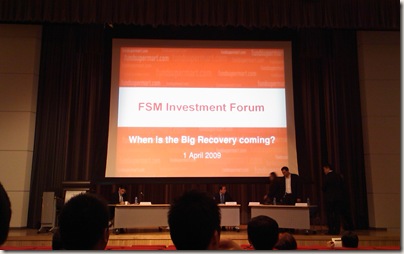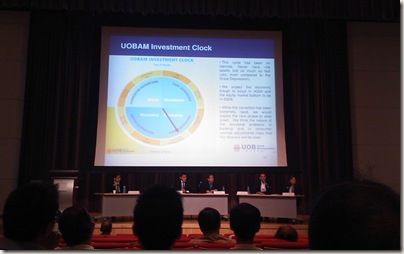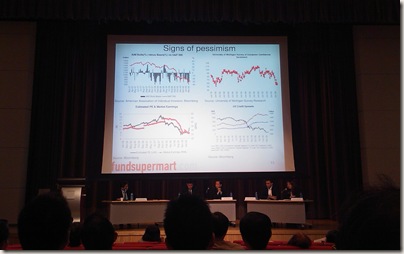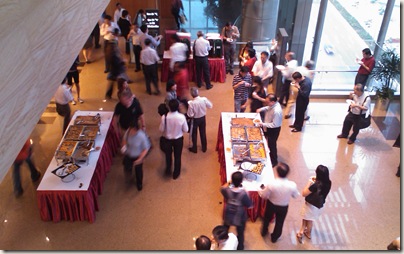Overview:
Extended Settlement (ES) contracts share many similarities with the Contract for Difference (CFD) product available from several brokerages in Singapore. ES contracts are different in that they are offered directly by the Singapore Exchange (SGX) and not at the brokerage level. In Finance lingo, an ES contract is really a Futures contract. If you have ever tried Futures or CFD, you are already familiar with ES contracts. If not, this CashBench entry will be a useful read.
Key Features:
An ES contract is a derivative product, and the value of all derivatives depends on the underlying asset. In this case, the underlying is a stock listed on SGX. SGX has initially chosen 28 securities where ES contracts can be issued on. These are mainly component stocks of the Straits Times Index (STI).
The buzz on ES contracts is the ability for you to short-sell, something that you can’t effectively carry out with stocks unless you go through the hassle of borrowing stocks beforehand. The need for borrowing arises from the need to have the stocks on hand before you can sell them away. Short-selling without borrowing, for a duration of more than one day on the SGX, will get you a nice penalty. With the ES contract, you can take a “short” position and have up to 35 days to buy-in the underlying stock yourself with no need to make any borrowings.
“ES contracts allow you to short-sell, something that you can’t effectively carry out with stocks.”
The exact number of days you have depends on when you take up a “short” position in the ES contract. These contracts are issued on the 25th of every month and expire at the end of the following month. 3 days upon expiry, settlement occurs. If you took a long position, it’s similar to buying stocks. You will pay for the agreed price and the underlying stocks are yours to keep. If you took a short position, you must deliver the underlying stock or face the buying-in penalty mentioned above. Of course, you do not need to wait until the contract expires by closing out your position at any time before the contract expires. Closing out your ES contract position is similar to contra trading in the stock market.
For all the goodies of ES contracts, you need to post a margin collateral before you can buy or sell ES contracts. If you already have a margin-trading account for stocks, you will be fairly familiar with the requirements. Margins are a small portion of the total value of the ES contract and can be as little as 5%. You must deposit a dollar amount with your broker at least equal to the initial margin before you can buy or short-sell ES contracts. If the stock market experience significant price swings and your ES contract loses money beyond the maintenance & variation margins, you will be asked to top-up your account. Don’t have enough cash to top-up? Then you will be forced to close out your ES contract and settle the remaining losses with your broker. Refer to the ES contract guide at the end for more on margins.
CashBench Advice:
This is the most important part of the whole blog entry. ES contracts are not meant to be investment tools on their own. Rather, the main purpose of ES contracts is for risk management and hedging. SGX lists it as the 3rd benefit out of 6 possible benefits. In other words, CashBench generally does not recommend that you buy or sell ES contracts except for managing risks or hedging. Why?
“The primary use of ES contracts is for risk management and hedging, not speculation.”
ES contracts have a contract life of only 35 days. For retail investors like you and me, we are essentially speculating on the price movement of the underlying stock into the future for up to 35 days. Very rarely will anyone be able to make an accurate bet in such a short period consistently. Moreover, as margins are involved, ES contracts are leveraged. This means that your gains or losses will be magnified. Recall that you may only need to pay as little as 5% of the full ES contract value initially. The other 95% is due in about one month’s time unless you close out your ES contract before that. In addition, the ES contract price will change as the underlying stock price changes. Any movements against you will be recorded in a daily process called “mark to market”. With a 5% margin upfront, a 1% movement in the ES contract against you will knock you off by 20%. In other words, by just paying 5% upfront, you have magnified your gains or losses by 20 times. For now, brokers in Singapore require you to put up 10% to 25% of the contract value upfront for a leverage effect of 10 times to 4 times.
For your reference, the SGX ES contract website includes a PDF guide on ES Contracts with more details.





